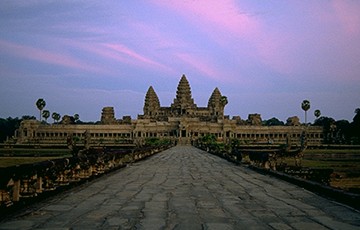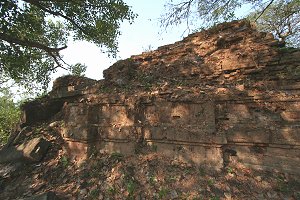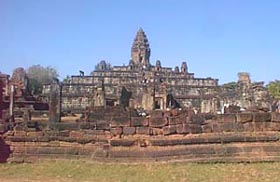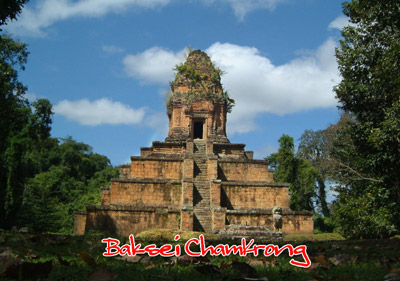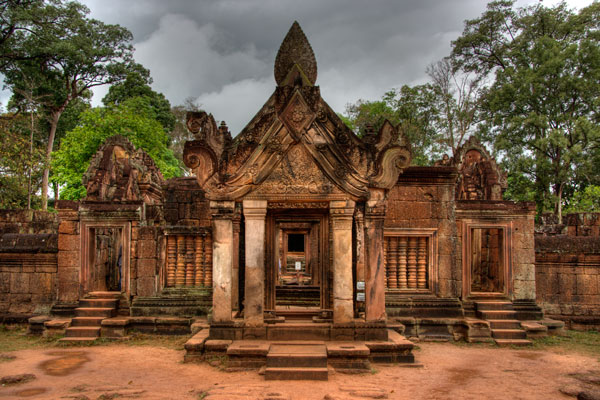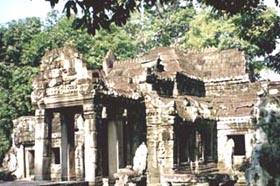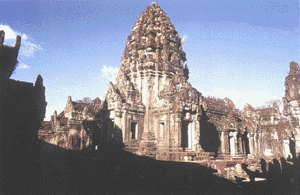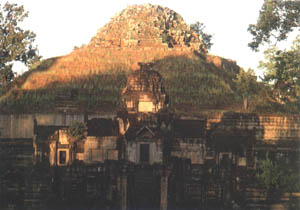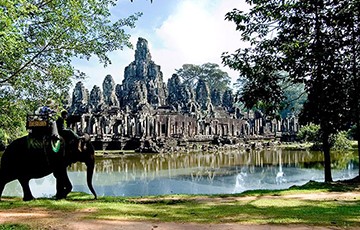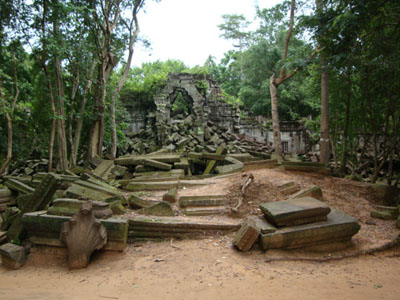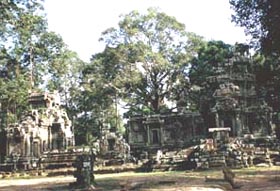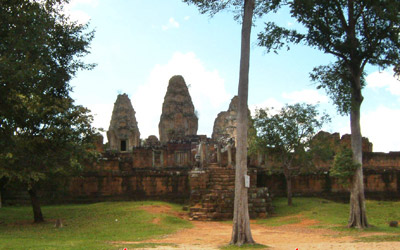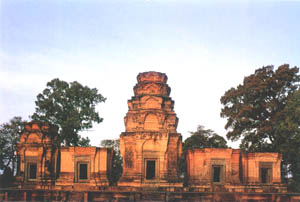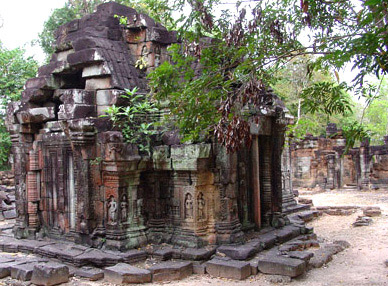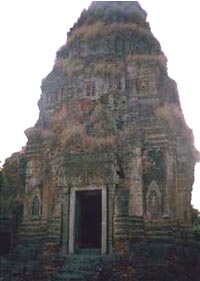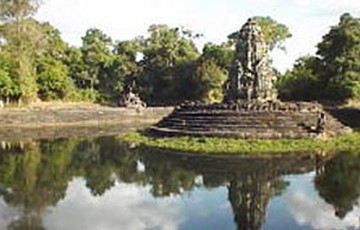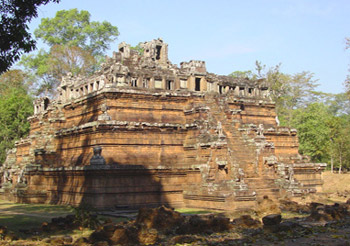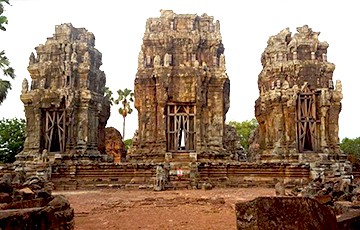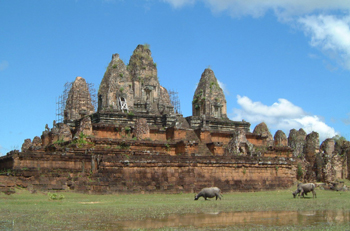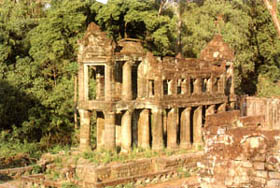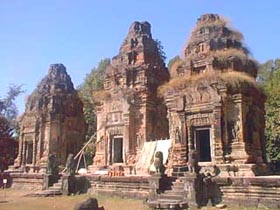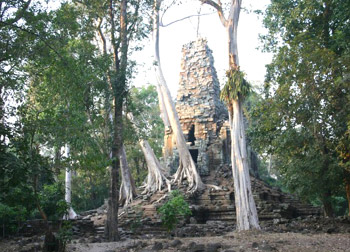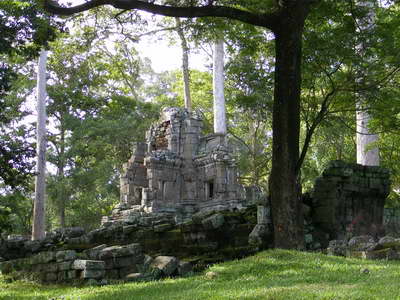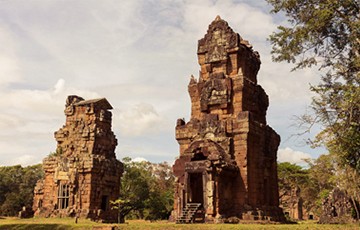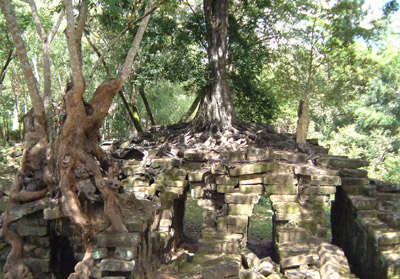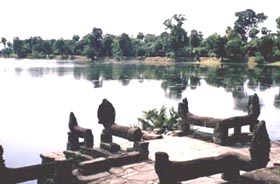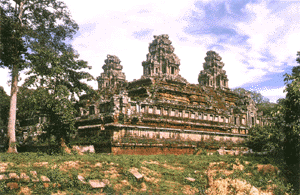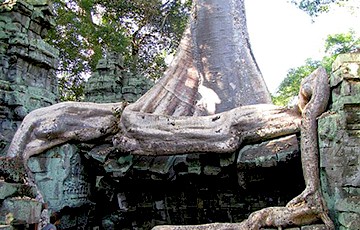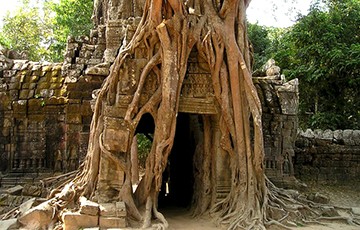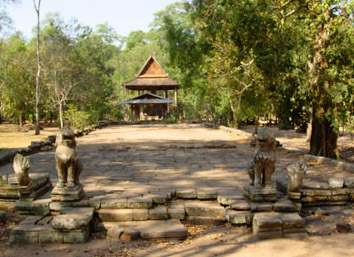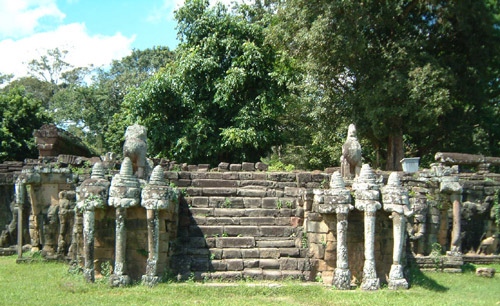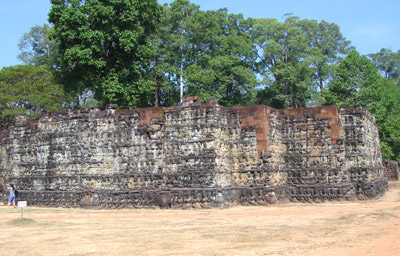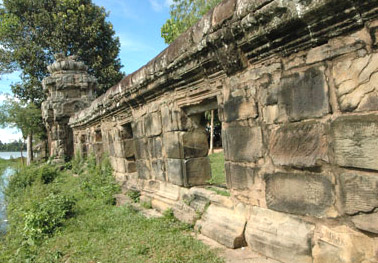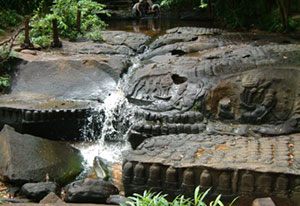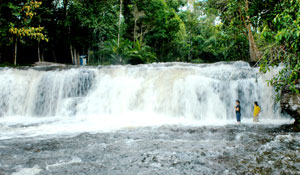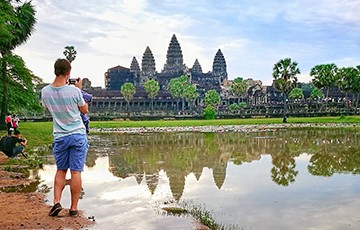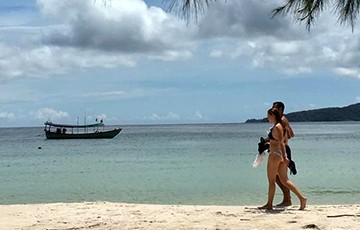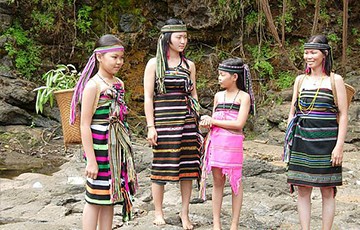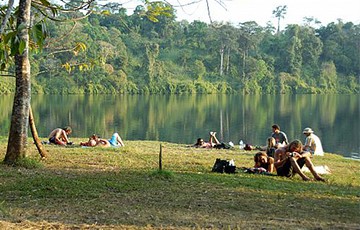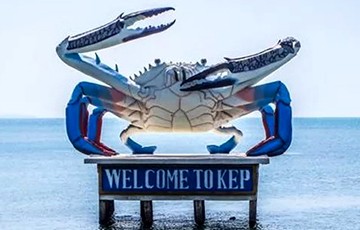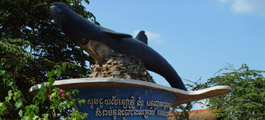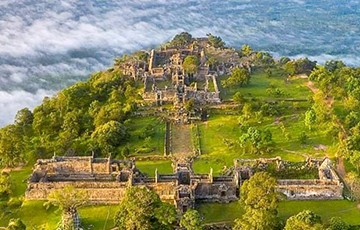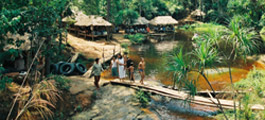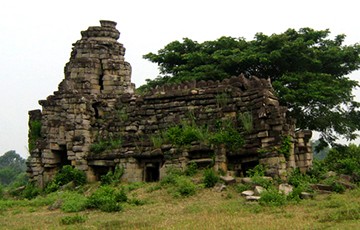Roluos Group of Monuments
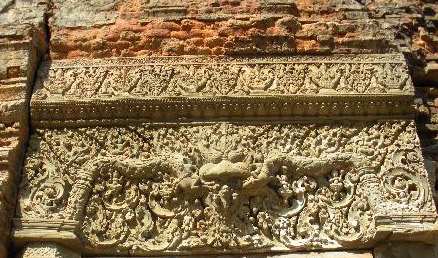 Three temples Bakong, Lolei and Preah Ko 11 Kilometers (6.8 miles) southeast of the Siem Reap Market, comprise the Roluos group of monuments they are close together and extend over an area of three kilometers ( 1.9 miles ) east of the Great Lake.
Three temples Bakong, Lolei and Preah Ko 11 Kilometers (6.8 miles) southeast of the Siem Reap Market, comprise the Roluos group of monuments they are close together and extend over an area of three kilometers ( 1.9 miles ) east of the Great Lake.
The Roluos group, dating from the late ninth century, is the earliest site of the 600 years Angkor Period that is open to visitors.
The three temples belonging to this important group have similar characteristics of architecture, decoration, materials and construction methods, which combine to reveal the beginning of the Classic Period of Khmer art.
BACKGROUND
Roluos is the site of an ancient center of Khmer civilization known as Hariharalaya (the abode of Hari-hara'). Some 70 years after Jayavarman II established his capital on Mount Kulen in 802 inaugurating the Angkor Period, the king moved the king moved the capital to Hariharalaya, Perhaps for a better source of food or for defence purposed. He died at roluos in 850. It is generally believed that his successors remained there until the capital was moved to Bakheng in 905.
Architecture: The buildings of the Roluos Group are distinguished by tall square-shaped brick towers on pedestals. The open to the east, with false doors on the other three sides. As is typical of this period, brick was used for the towers and sandstone for carved areas such as columns, lintels and decorative niches.
A wall originally enclosed the temples though only traces remain today. It was intersected on two or more sides by an entry tower, an innovation of this period, of perhaps slightly earlier. The early examples were square with a tiered upper portion. The library also made also appearance at Roluos. It is a rectangular building with a curved roof and pediments. A temple often has two libraries, one on each side of the entry tower preceding the Central Sanctuary.
DECORATION: The characteristic decorative features of the Roluos group are: a Kala (monster head), the Hindu god Visnu on his mount the Garuda, female figures with abundant jewelry, and a preponderance of guardians and Apsaras. Columns are generally octagonal and intricately adorned with delicate leaves. Decoration on the lintels at Roluos is, according to some art historians, ' the most beautiful of all Khmer art '





